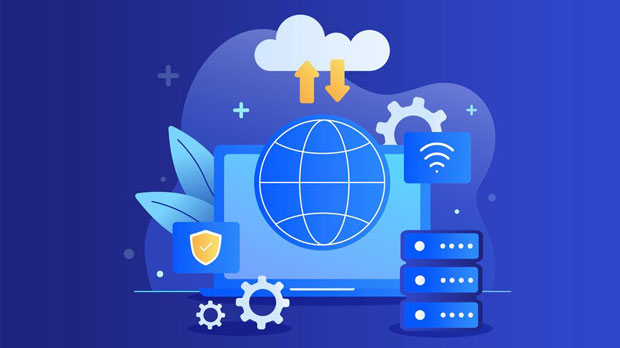In high-concurrency scenarios, where multiple simultaneous requests must be processed efficiently, the combination of PYPROXY and residential proxy static services can play a crucial role. PyProxy, an advanced proxy tool, allows for the management and rotation of proxies to ensure a seamless and secure flow of data. When paired with residential proxy static services, which offer IP addresses originating from real residential locations, the system can handle requests at scale without compromising anonymity or performance. This article delves into the performance of PyProxy combined with residential proxy static in high-concurrency environments, exploring key factors such as latency, scalability, security, and reliability, ultimately providing insight into how this pairing supports efficient data operations in demanding applications. Understanding PyProxy and Residential Proxy StaticTo better understand the impact of PyProxy in combination with residential proxy static services, it's essential to first define each component. PyProxy is a Python-based proxy rotation tool, capable of automating the management of multiple proxy servers. Its flexibility allows users to configure the proxies according to the demands of their system, whether for scaling, security, or bypassing geographical restrictions. residential proxies, on the other hand, use IP addresses from real residential locations, unlike data center proxies that originate from virtual servers. This makes residential proxies harder to detect, offering a higher level of security and reduced chances of being blocked by websites. When used in static form, these proxies maintain the same IP address over a period, which is beneficial for tasks requiring long-term connections.The Role of High-Concurrency in Proxy PerformanceHigh-concurrency refers to a scenario where numerous requests are sent to a server simultaneously, demanding rapid response times and robust infrastructure to handle these simultaneous interactions. In this environment, the importance of proxy servers cannot be overstated, as they serve as intermediaries between users and the internet, distributing the load and ensuring that requests are not flagged or blocked by target servers.In high-concurrency scenarios, the proxy server must handle thousands of simultaneous requests without breaking down or introducing significant delays. Here, the combination of PyProxy and residential proxies is especially valuable due to their ability to distribute traffic across multiple IP addresses, preventing any one IP from being overwhelmed or detected as suspicious by the target server.Performance Considerations in High-Concurrency EnvironmentsWhen assessing the performance of PyProxy combined with residential proxy static in high-concurrency situations, several factors must be considered:1. Latency and Speed The speed at which requests are processed is critical in high-concurrency environments. PyProxy’s efficient rotation mechanism allows for seamless switching between proxies, ensuring that latency is kept to a minimum. Residential proxies, while offering superior anonymity, often face slower speeds compared to data center proxies. However, by utilizing high-quality static residential proxies, the latency issues are reduced, making them suitable for high-concurrency operations.2. Scalability Scalability is another critical factor in high-concurrency environments. As the number of requests increases, the system must be able to scale accordingly. PyProxy facilitates this by enabling users to add or rotate proxies dynamically, thus distributing traffic across a growing number of IP addresses. This scalability ensures that no single proxy becomes a bottleneck, which would otherwise lead to delays or downtime.3. Reliability and Stability In high-concurrency scenarios, downtime or instability in the proxy system can have a significant negative impact on performance. Static residential proxies, by maintaining the same IP address, provide a consistent and reliable service. Combined with PyProxy's automated proxy rotation and management features, the reliability of the system is enhanced, ensuring smooth and continuous operation even under heavy traffic loads.4. Security and Anonymity In high-concurrency environments, security is a paramount concern. Residential proxies are more secure than data center proxies because they are less likely to be flagged by target websites as suspicious or malicious. Furthermore, PyProxy’s ability to manage and rotate proxies ensures that the IP addresses remain undetected, providing an extra layer of anonymity and protection against data breaches or IP bans.Challenges of Using PyProxy with Residential Proxy Static in High-ConcurrencyWhile the combination of PyProxy and residential proxy static offers a range of benefits, there are some challenges to consider, especially when dealing with high-concurrency traffic.1. Resource Management High-concurrency environments require careful resource management, including memory and bandwidth. While PyProxy optimizes the rotation and management of proxies, a large number of concurrent requests can place significant strain on the system. This requires careful planning to ensure that the infrastructure can support the volume of traffic without leading to server crashes or delays.2. Cost Considerations Residential proxies tend to be more expensive than data center proxies due to their superior quality and security features. In high-concurrency scenarios, where a large number of proxies might be required, the cost of utilizing static residential proxies can add up quickly. This can be a limiting factor for businesses or individuals with budget constraints.3. Rate Limits and Blocks Even with residential proxies, there is always the risk of being rate-limited or blocked by target servers, especially when dealing with large volumes of traffic. While static proxies provide more stability in terms of IP addresses, they can still be flagged or throttled by websites that detect abnormal behavior or an unusually high volume of requests. Managing these rate limits and ensuring that the system remains effective is a challenge in high-concurrency scenarios.Optimizing PyProxy with Residential Proxy Static for High-Concurrency ScenariosTo maximize the performance of PyProxy when paired with residential proxy static services, several best practices should be followed:1. Load Balancing Implementing a load balancing strategy can help distribute the traffic evenly across multiple proxies, preventing any single proxy from becoming overloaded. This ensures that the system can handle a higher volume of requests without a significant drop in performance.2. IP Rotation and Geographical Diversity Although residential proxies are static, leveraging IP rotation within different geographical regions can help distribute the traffic more efficiently. PyProxy can be configured to rotate between different static proxies, reducing the chances of any one proxy being flagged.3. Proxy Health Monitoring Continuously monitoring the health of the proxies in use can prevent issues related to proxy failure or IP blocking. PyProxy can be configured to check the health status of proxies, automatically switching to alternative proxies if any issues are detected.4. Optimized Request Handling Optimizing the request handling logic to ensure that requests are sent in a manner that mimics natural user behavior can help prevent rate limits or blocks. By adjusting the timing between requests and avoiding too many simultaneous hits to the same resource, the system can avoid detection and maintain high performance.The combination of PyProxy and residential proxy static services can significantly improve performance in high-concurrency scenarios by distributing traffic across multiple IP addresses, enhancing security, and ensuring reliability. However, to achieve optimal performance, careful attention must be given to scalability, resource management, and proxy health. While challenges such as cost and rate limiting exist, the benefits of this pairing make it a powerful solution for handling high-concurrency operations, particularly for businesses and individuals who require a balance of speed, security, and anonymity.
Sep 20, 2025



































































